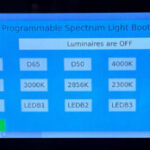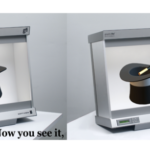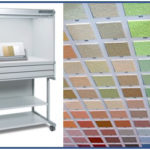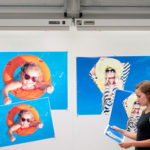May 16, 2019
What Is Metamerism?
Metamerism occurs when two colored objects appear to match under one light condition and do not match when viewed under a different lighting condition. There are four types for metamerism.
- Observer metamerism: Occurs when a pair of colors match for one observer, but not for a second observer.
- Illuminant metamerism: When two colors match under one light source but not under a different source.
- Geometric metamerism: When a pair of samples (usually textured) match under one illuminant and viewing angle, but no longer match when the angle of illumination or viewing angle changes.
- Device metamerism: Also known as sensor metamerism is a result of different light senses across camera models.
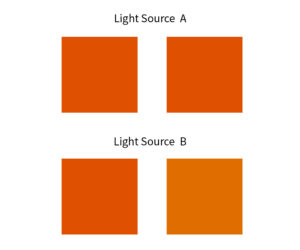
Visualizing Illuminant Metamerism
The Facts about Metamerism:
In a study from the Optical Society of America which analyzed the frequency of metamerism in consumer cameras, experiments show that about 18%–22% of the pixels of 423 spectral images of indoor scenes in five illumination conditions are metameric in the sense of angular difference. It was also observed that 1%–4% of the colors that would have appeared similar to human eyes are reproduced as distinct colors in the cameras.
What do these statistics mean?
A moderate percentage of image colors may appear differently depending on the viewing angle of a particular image. A small percentage of image colors will appear to match to the human eye, however a camera sensor can pick up those colors as distinct and different from one another.
A Metameric Match vs. A Spectral Color Match
In the paint industry, color matches are often a spectral color match to avoid a metameric color match that disappoints the customer when they apply the paint at home under different lighting conditions. A spectral color match attempts to formulate two colors with the same reflectance characteristics, whereas a “least-metameric” match reduces the sensitivity of the color match to changes in illuminant, or differences between observers. A spectral match is a non-metameric match – meaning that two objects with the same spectral reflectance curves will appear to be the same color under any light source.
Achieving Color Harmony
In order to promote color continuity in color critical industries it is best to use methods that provide consistent lighting scenarios with the fewest variables such as:
1. Sourcing materials from one supplier
– Use the same source for fabrics, pigments, papers, etc. A trusted supplier of materials will not only ensure consistent quality of the materials, but will also help to minimize variations in final products
2. Using the same camera, settings and scenes
– Consistency of all elements will deliver optimal photographic matching
Viewing samples against a neutral background
3. Using a neutral background
– GTI Standard Grey Neutral paints will help eliminate “simultaneous color contrast” and minimize “color pollution.” These occur when a standard illuminant is reflected off of a colored wall. GTI’s neutral grey paint is specially formulated to have a flat spectral response without any color bias
– A “neutral” grey is not simply a black-white mix, but an equal mixture of all the spectrum (r-o-y-g-b-i-v) colors
4. Creating a consistent lighting environment using an industry compliant color matching system
– A light booth is an essential tool for proper color matching, the detection of metamerism, and the communication of color across the supply chain
– To achieve this goal, the graphic arts and photographic industry have adopted ISO 3664:2009 as their viewing standard. ISO 3664:2009 specifies D50 daylight
– Industry color applications (paints, textiles, plastics, etc.) have adopted ASTM D1729. This standard recommends D65 as the primary daylight source and others as secondary sources to check for metamerism
– GTI’s Graphiclite light booths conform to the ISO 3664:2009 viewing standard. While, CMlite color matching systems comply with the ASTM D1729 viewing standard
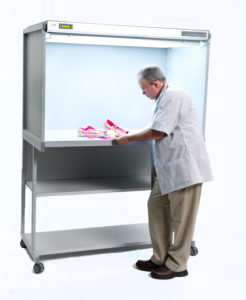
CMB-2540/FS color matching booth with floor stand
For more information about GTI color viewing solutions, contact GTI.


